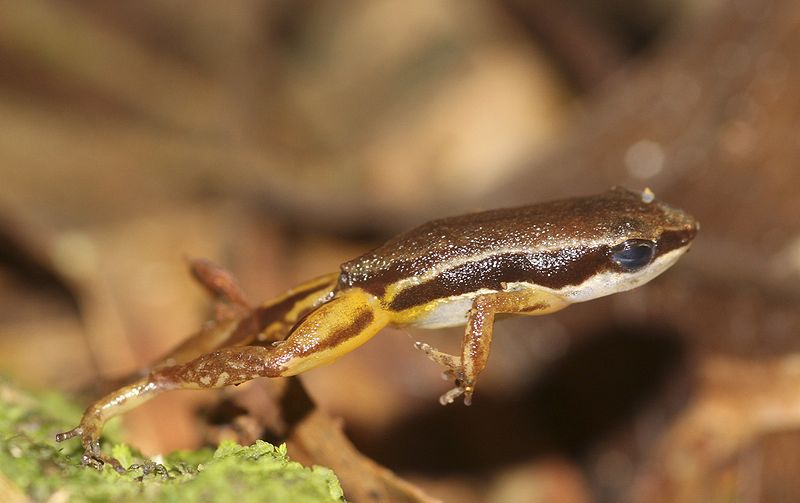Please note: Osher Rainforest will be closed for maintenance May 7-9.
Science News
Saving Amphibians
June 8, 2011

“Amphibians are long-term survivors. They've been on Earth for 360 million years, and have made it through four mass extinctions. They were doing just fine until now, but something unprecedented and worrisome has happened in the last 40 years." That’s Vance Vredenburg of San Francisco State (and an Academy fellow) talking about the global decline of amphibians.
It’s no secret that these charismatic creatures are in trouble—they’re disappearing at an alarming rate. Recent estimates suggest that nearly one-third of all amphibians are threatened with extinction.
According to Andrew Blaustein, of Oregon State University, “We're now realizing that it's not just one thing, it's a whole range of things… With a permeable skin and exposure to both aquatic and terrestrial problems, amphibians face a double whammy. Because of this, mammals, fish and birds have not experienced population impacts as severely as amphibians—at least, not yet.”
Vredenburg presented the large list of threats facing amphibians at a lecture at the Academy last week:
- Habitat destruction
- Over exploitation
- Pollution
- UV-B radiation
- Climate change
- Introduced predators
- Disease
- Synergistic effects
Vredenburg’s research primarily focuses on a disease caused by a chytrid fungus known as Batrachochytrium dendrobatidis (or Bd). This disease “has driven at least 200 of the world’s 6,700 amphibian species to extinction,” the New York Times reported last year. Now Vredenburg and his colleagues are trying to learn more about this terrible disease in order to stop it.
Last month Tina Cheng, a graduate student working with Vredenburg, published an article tracking the disease through museum biological specimen collections, like the Academy’s.
Vredenburg likens tracking the amphibian-killing disease to a murder mystery. When did it start? Where did it originate? “One of the things that's so cool about Tina's research is that she's solving a mystery that's been hanging over science…” with museum collections holding the evidence.
The museum specimens helped Cheng and her colleagues track at least one Bd epidemic wave that began in southern Mexico in the early 1970s, spread southward to western Guatemala in the 1980s and 1990s, and to Costa Rica by 1987. Their work now continues with Asian specimens.
In addition to museum specimens, researchers are trying to census current populations and now you can help! Two weeks ago, UC Berkeley’s AmphibiaWeb (co-founded by Vredenburg) launched a new website for citizen scientists (people like you and) called Global Amphibian Blitz. The new site allows people to upload photos and GPS information of amphibians they encounter hiking, biking or even in their own backyards. Scientists will then identify and filter the submissions in search of rare species or out-of-range occurrences of interest to the scientific and conservation communities.
“We’re not sure how many species we might tally in the first few months or even after the first year,” says Vredenburg. “But exploring this kind of crowd-sourcing of biodiversity data is a critical step towards using our scarce conservation money wisely.”
Image from Brian Gratwicke/Wikimedia